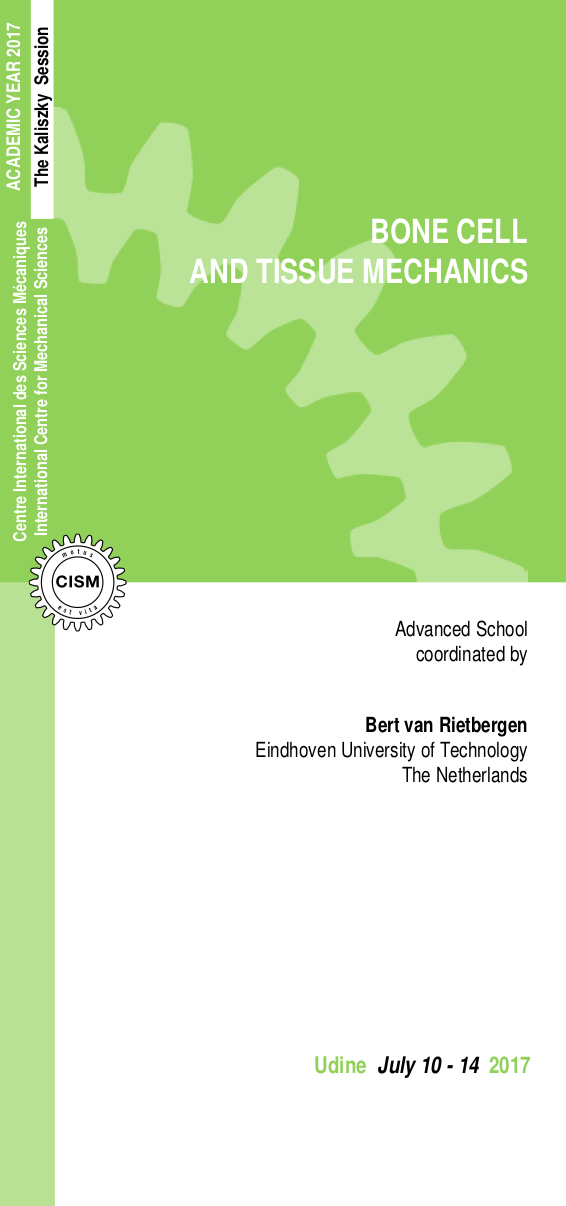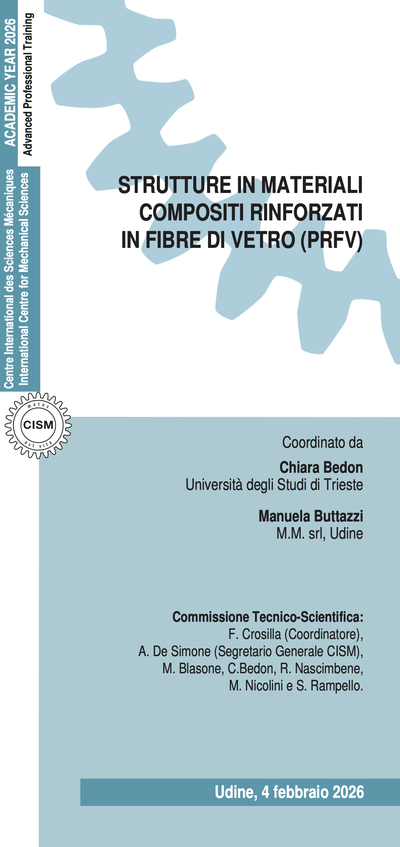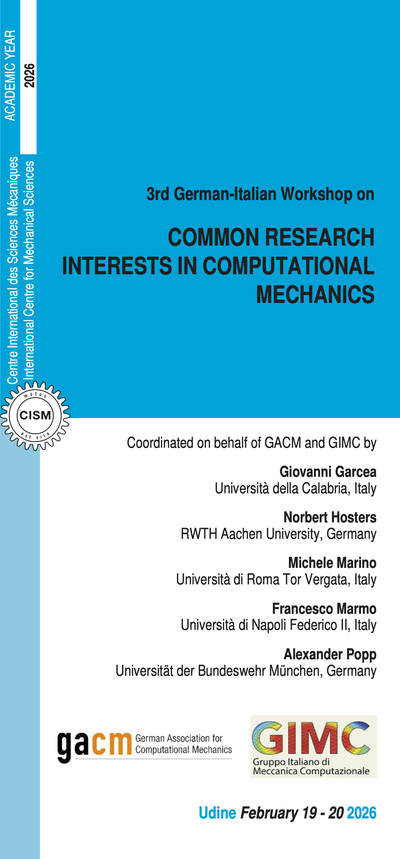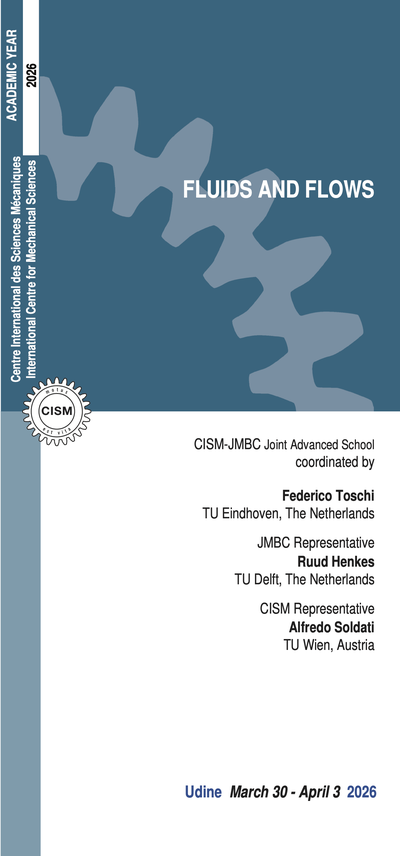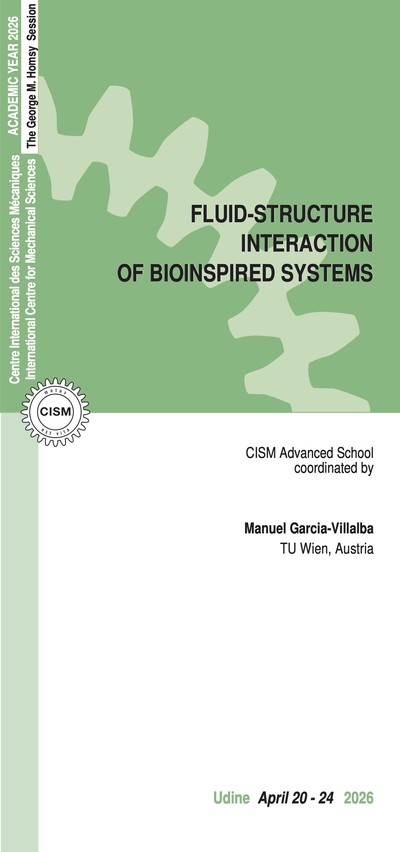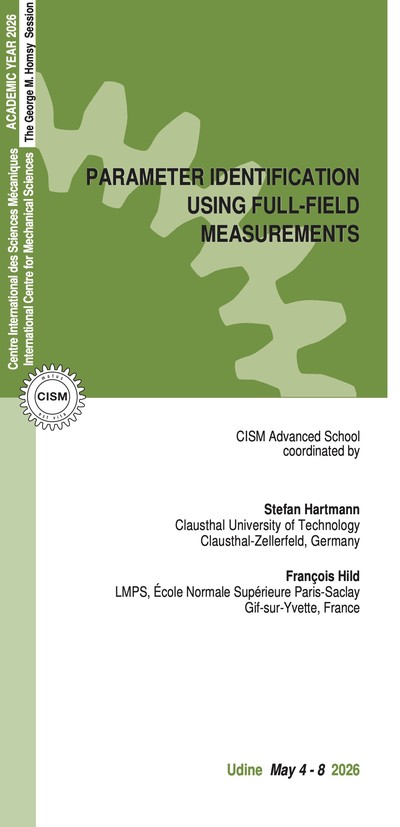Bone is a remarkable material: it is strong yet lightweight, can adapt itself to changes in mechanical loading, lasts for a lifetime and can repair itself after a fracture. Although biology has revealed many secrets of how bone cells can form and remove bone tissue, the mechanisms that control these processes, and the role of mechanical loading in this, are still not well understood. The goal of this course is to provide state-of-the-art information on this topic. To do so, the course will review the entire area of bone cell and tissue mechanics at all three commonly distinguished levels of structural organization of bone: the bone organ level, the bone tissue level and the bone cell level. The course will be of a multi-disciplinary nature and include topics like bone biology, imaging and computational modeling. At the bone organ level, the focus will be on the diagnosis of bone strength using imaging and computational techniques. Bone remodeling at this level is often considered as an optimization process that adapts bone density and shape to the mechanical loading conditions. Hypothetical models that are developed to describe such adaptations of bone are discussed. At the bone tissue level, bone can form remarkable complex porous architectures. This capability provides bone with the possibility to form bone with mechanical properties in a wide range. Methods to visualize and model such structures in 3D have become available only over the last two decades. Hypothetical models describing how these structures evolve, how they can adapt to mechanical loading and how they can be affected by bone diseases are discussed. At the level of the cell, promising candidates for the mechanosensory system will be discussed, as well as possible signaling pathways for the communication between bone cells. At this level, the porosity of the bone tissue itself also becomes an important factor since it is assumed that fluid flow plays an important role in the mechanosensory system. The visualization and modeling at this level still is a challenging field of research. Besides being informative, it is hoped that the course will function as a forum for the exchange of data, philosophy, and ideas across disciplinary divides and so provide further stimulus for a comprehensive approach to the problems of bone mechanics. The target audience are graduate students, PhD candidates and young faculty members. We expect an audience as diverse in background as the lecturers, that is to say spanning across the professional spectrum from biomedical and structural engineers, to biologists, veterinarians and orthopaedic and dental surgeons.
Cowin, S.C. and Doty, S.B., Tissue Mechanics, Springer, 2007. Doblaré, M. and Merodio J. (editors) Biomechanics, Eolss Publishers, 2015.Gefen, A. (editor) Cellular and Biomolecular Mechanics and Mechanobiology, Springer, 2011. Jacobs, C.R. Introduction to Cell Mechanics and Mechanobiology, Garland Science, 2012. Silva, M.J. (editor) Skeletal Aging and Osteoporosis: Biomechanics and Mechanobiology, Springer, 2012.
Georg Duda (None)
5 lectures on: bone tissue formation and repair. Specific topics: in-vivo loading; in aged bone adaptation; mechanobiology of bone healing; guided bone formation; inflammation and bone regeneration.Peter Fratzl (None)
5 lectures on: bone mineralization and fracture resistance. Specific topics: multi-scale structure of bone; mechanisms of deformation and fracture of bone; bone mineralization kinetics; mineral distribution and its dynamics; bone mineral in osteoporosis.Jenneke Klein-Nulend (None)
6 lectures on: bone biology and bone cell mechanosensitivity. Specific topics: cells and tissues; bone cells; bone growth and remodeling; osteocyte mechanosensing; histomechanics of bone remodeling; cell biology and histomechanics.Ralph Müller (None)
5 lectures on: bone imaging and structure. Specific topics: x-ray physics; radiographic imaging; computed tomography; hierarchical bone functional imaging; in-vivo bone tissue and cell imaging.Tim Skerry (None)
5 lectures on: the role of loading in skeleton formation and adaptation. Specific topics: history of mechanobioloy; the mechanostat theory; in vivo model systems for mechanobiology; clinical translation.Bert van Rietbergen (None)
5 lectures on: bone strength and remodeling. Specific topics: bone mechanical parameters and tests; computational models for bone strength determination; bone remodeling models; clinical assessment of bone strength and adaptation.The registration fee is 575.00 Euro + VAT taxes*, where applicable (bank charges are not included). The registration fee includes a complimentary bag, four fixed menu buffet lunches (on Friday upon request), hot beverages, downloadable lecture notes and wi-fi internet access. Applicants must apply at least one month before the beginning of the course. Application forms should be sent on-line through our web site: http://www.cism.it. A message of confirmation will be sent to accepted participants. If you need assistance for registration please contact our secretariat. Applicants may cancel their course registration and receive a full refund by notifying CISM Secretariat in writing (by email) no later than two weeks prior to the start of the course. If cancellation occurs less than two weeks prior to the start of the course, a Euro 50.00 handling fee will be charged. Incorrect payments are subject to Euro 50.00 handling fee. A limited number of participants from universities and research centres who are not supported by their own institutions can be offered board and/or lodging in a reasonably priced hotel or student dormitory, if available. Requests should be sent to CISM Secretariat by May 10, 2017along with the applicant's curriculum and a letter of recommendation by the head of the department or a supervisor confirming that the institute cannot provide funding. Preference will be given to applicants from countries that sponsor CISM. Information about travel and accommodation is available on our web site, or can be mailed upon request.
* Italian VAT is 22%.
